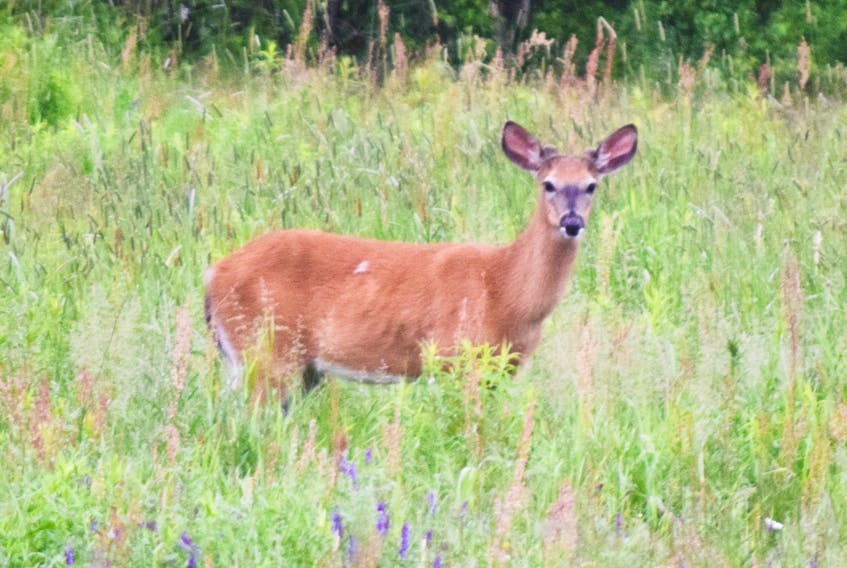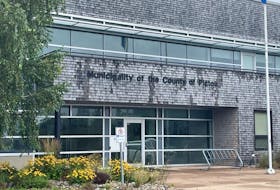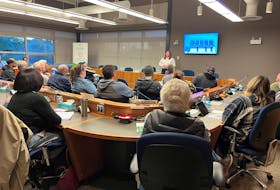PICTOU, N.S. — Pictou County has a deer problem.
“To see a deer in town 15 years ago was a big deal, but now I see half a dozen of them on my drive home through Stellarton,” said David Steeves who is a district technician of forest resources with the Department of Forestry and Lands in MacLellan’s Brook.
Steeves said their office has been receiving calls from residents of all six municipalities who are concerned about white tailed deer walking on sidewalks and streets, eating garden vegetables, and generally existing in the places where, traditionally, they were too skittish to enter.
White tailed deer populations have spiked and plummeted twice since they were first introduced to the province back in the 1890s.
According to harvest numbers, which provide some measure of overall deer populations, white tailed deer populations were at their highest in 1954 and 1985. Their numbers dropped off significantly in the years after both booms, and each decline was followed by a period where the populations leveled off.
According to the DLF website, the province of Nova Scotia is capable of supporting a herd of approximately 100,000 deer in the pre-hunting season.
Harsh and mild winters have been attributed to herd numbers rising and falling, but in general that 100,000 is considered to be the provincial carrying capacity for white tailed deer, and Steeves says that Pictou County’s current deer population is at a healthy number consistent with historical trends.
Nevertheless, Pictou County’s deer population has become a “significant concern” according to Steeves, because more and more deer are finding their meals in urban areas instead of foraging in the wild.
“They’re losing their natural ability to forage and make their way in a natural environment,” said Steeves in an interview. “So, they’re getting conditioned to getting their food in town versus having to look for it in the wild.”
Officers with the Department of Forestry and Lands aren’t the only people receiving complaints from concerned citizens. Last June, the Town of New Glasgow put out a survey to the community asking people to provide feedback on their concerns about the deer population and what solutions they would be in favor of.
Of the 422 people who participated, the majority said that they consider the deer population in New Glasgow (80 percent owned property in New Glasgow) to be a problem.
The top three concerns that participants had were:
- Worries about the prevalence of deer ticks and increased transmission of Lyme Disease (39 per cent)
- Vehicle collisions with deer posing a danger to passengers and the costs associated with repairs (24 percent)
- Damage done to gardens (22 per cent)
The survey also asked participants to select from a list of 12 control measures to curb the urban deer population. Of those twelve implementing a feeding ban on deer received the strongest support.

The survey, in which 422 people participated, asked people to choose from 12 control measures that they would be in favour of. A feeding ban, which the Town of New Glasgow already has written into its bylaws, was the one with the strongest support among participants.
That is exactly what Steeves is urging.
“The frequency which people are trying to help the diet along is really the main aspect of it.”
In other words, people are feeding the wildlife.
“We made it easier for them to find food in town, and they’re passing that knowledge on to their offspring,” said Steeves.
On the surface, feeding deer seems like the humane thing to do, and Steeves says that he appreciates the good intentions that motivate people who feed the wildlife. But he says that the repercussions of those good intentions are what Pictou County is currently experiencing.
“It tugs at the heart strings when you see a lone doe wading through waist high snow trying to find food, but the worst thing we can do is interfere with mother nature’s process,” said Steeves.
What’s more, feeding wildlife of any kind contravenes New Glasgow bylaws which carry fines of up to $1,000 should citizens file a complaint.
At a town council meeting on Sept. 3 councilors discussed the results of the survey and what the next steps will be.
Currently, the town has not budgeted for the situation. Provided that there is buy-in from neighbouring municipalities, the next step would be to consult with DLF. Potentially, New Glasgow and the other municipalities could go the route that Truro took and use the Pellet Group Inventory, a project which measures deer population by counting pellet piles (deer poop) in randomly selected tracts of land in and around municipalities.
"If we're exceeding, then they (DLF) would authorize a specific effort to reduce the population," said town of New Glasgow CAO Lisa MacDonald.
Getting to that point could still be at least three years down the road.
In the mean-time Steeve’s message is clear.
“Bad outcomes come from good intentions. Folks think that they’re doing wildlife a big favour by putting out that grain or corn, but we’re actually doing one of the biggest disservices to the animal that we can by doing that.”









